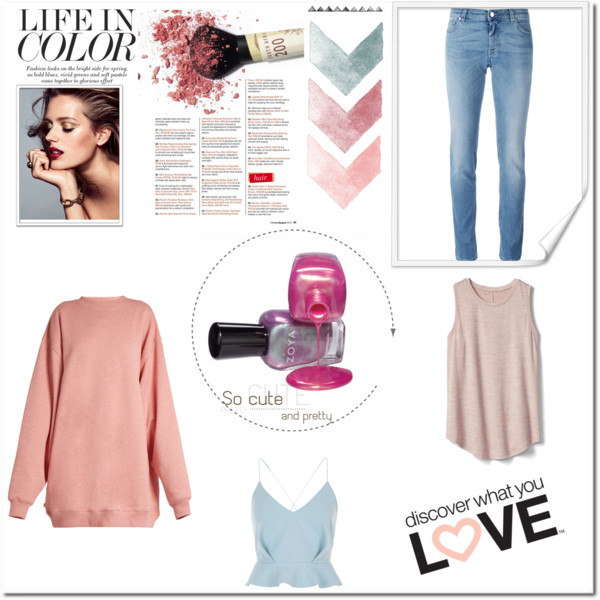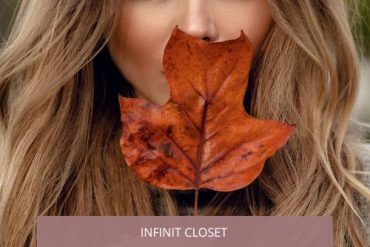It’s a fact, that most clothes in your wardrobe will go unused, or will see barely any use after the novelty of the purchase wears off. In fact, it is likely that in your everyday life you only use 20% of your clothes! Color analysis is a useful method to avoid the frustrating feeling of having lots of clothes but nothing to wear. Building a capsule wardrobe with your natural coloring in mind means that everything can be worn with everything else. It removes the complexity of getting dressed without going as far as having a uniform or dressing in monochromatic black every single day. But how does color analysis work?
What Is Color Analysis
Also known as seasonal color analysis, personal color analysis or skin tone color matching, color analysis is a method to find the best color combinations for a person in both cosmetics and clothing. This is done by matching colors to a person’s eye, skin color and hair color so everything is in harmony. It was very popular in the 80s, where 4 season color analysis divided people into 4 seasons:
- Spring, or light and warm coloring
- Summer, light but cool coloring
- Autumn, deep and warm coloring
- Winter, deep and cool coloring
While this worked for some people, particularly Caucasian or light-skinned, it was too restrictive, and more advanced methods of creating palettes appeared which took into account people who had more neutral coloring or people of color who always ended up classified as Autumn or Winters. But all methods use a similar way to decide which colors are the best match for a person, based on three criteria:
- Hue (whether a person natural coloring has warm undertones or cool undertones)
- Value (how deep or light the colors are)
- Chroma (do you suit pure or soft and muted colors?)
Emilie de Ravin coloring is Light, Clear and Warm, she is a Clear Spring
Each different color analysis method gives more importance to some factors than others, for example, disregarding hair color and focusing on the skin, or focusing on TMIT (the most important thing) to identify potential seasons. Most systems divide the color wheel in 12 or 16 palettes which include neutral or in-between seasons. Personally I find the 12 season color system the most useful, but neutral seasons or those looking for a more prescriptive palette may prefer the 16 season color system as it includes variations such as darker summers (that are not dark and high contrast enough to suit the colors in the winter palettes). What matters the most is to find a color analysis method that works for you and a color palette that you can identify with and which makes you feel good.
Most people are able to identify at least their two best seasons, but there are many analyses that will lend you a helping hand using photographs or draping you in person using specially calibrated drapes. Others find discovering their true colors a truly life-changing moment, as they finally see how good they can look if they wear clothes that harmonize with the pigments they were genetically blessed with at birth. And others will say “I am a Summer, I love black, I intend to keep wearing black” and that is great, but they may get some ideas regarding accessories and pop colors that will improve their personal style. Color analysis is a tool, not something you must follow blindly.
Capsule Wardrobes And Seasonal Color Analysis
Seasonal color analysis is useful in two ways: First of all, it gives you clear guidelines about which colors suit your natural coloring. For example, if your skin, hair and eyes have warm color and muted dominant coloring a bright fuchsia may not be your best color, particularly compared with a toasted orange. For those of us who buy things because they just love the color in the shop, that alone is a huge help. But the other benefit of shopping with a seasonal color palette is that all colors in it are designed to harmonize with each other, because they share the same levels of hue, value and chroma. This means every piece in your capsule wardrobe will easily work with the others.
Once you have identified which colors suit you better, building a capsule wardrobe is down to two things: your personal taste and the natural level of contrast that suits you and which you are comfortable with. Some seasons, like the Winters and Springs, look better in big blocks of contrasting colors. More muted seasons benefit more from monochromatic looks with accent pieces. Seasonal color analysis provides you with a list of neutral tones that can be used as the basic foundation pieces of your capsule wardrobe, while you can also choose accent or fashionable pieces in your colors to stay up to date with trends and bring creativity into your closet. While not all seasons suit black and white, there are always lighter and darker neutrals in each palette. The difference is that instead of wearing a color that is too dark or too light for you, you will be wearing clothes that feel in the same wavelength as your hair and skin.
Seasonal Color Analysis and Makeup
On a day to day basis, you can find many harmonic make up colors on your color palette, from neutrals to brighter accent colors. It’s particularly useful when deciding on a lipstick, as the wrong color of lipstick can easily overpower your entire face. For eyes, most people choose eyeshadows that compliment their eye color and achieve the desired effect (statement, or a day to day neutral eye). However, you can use color analysis to inform the way you apply your makeup in order to avoid your eyes being the only visible thing in your face, or looking washed up. However, when choosing foundation the only way to do it right is actually trying them on until you find one that blends with your skin color, and finds a cohesive color palette; not everybody in the same season share the same overtones or has the same skin concerns.
Subscribe if you are a color queen!


